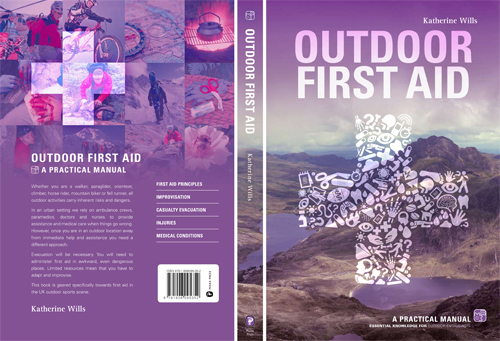Latest News

13th Aug 2013
For this latest Celox blog, we have invited Katherine Wills, author of Outdoor First Aid, to give her thoughts on Celox and why it played an important role in her book.
When I initially started teaching outdoor first aid I wanted to give my candidates a reading list which would help them to expand their knowledge of first aid skills in the remote UK setting. I soon realised there were very few books that covered basic outdoor first aid, and those that did were either produced in other countries – and had some very strange approaches to certain treatments – or were just too medically-orientated and overly complex.
Six years ago I started to write ‘Outdoor First Aid’. I wanted to present basic first aid principles geared specifically towards the UK mountains. As an advanced first aider with the Llanberis Mountain Rescue Team, I used my own experiences from the last 13 years to highlight some of the challenges of doing first aid in the remote outdoor environment.
Chapters include how to deal with a conscious and unconscious casualty, breathing problems, life-threatening bleeding and shock as well as the care of wounds, burns, fractures, soft tissue injuries and a whole host of medical and environmental conditions and injuries. Uniquely there are chapters on moving and transporting a casualty, working with the rescue services (including calling for Mountain Rescue), as well as a chapter on outdoor first aid kits.
When it came to the chapter on life threatening bleeding, I wanted to bring the reader up to date with the most modern techniques and equipment available. Along with the current NATO issue military trauma dressing and the often disparaged tourniquet I also wanted to present the novel haemostatic agents now available. I came across Celox a number of years ago whilst on a Mountain Rescue Medical and Trauma course in Edale and was impressed by the product and its effectiveness when given the chance to have a ‘play with it’.
From that moment on I have been advocating the use of Celox haemostats to the candidates on my first aid courses, and the significant role they can play, not only for casualties with a life threatening bleed but also those with more moderate leakage or hard to compress areas. Another problem in the outdoor setting is the potential for the casualty to become hypothermic (cold) and Celox has been shown to overcome this problem. It is also useful to help control bleeding in casualties who are taking blood thinning medication such as warfarin.
The great outdoors provides us with a playground, and for some, a place of work. All outdoor activities carry inherent risks and dangers. In fact seeking and controlling those risks can, for some, be a part of the whole enjoyment. Because of this there has to be an acceptance that injury could be a consequent of taking part in such activities. We must therefore be prepared to have to deal with an accident, possibly in an isolated, inaccessible or even hostile environment. Be prepared.
For more information on ‘Outdoor First Aid’ (ISBN: 978-1-906095-35-2), visit the website at https://www.activefirstaid.co.uk/book.html.
